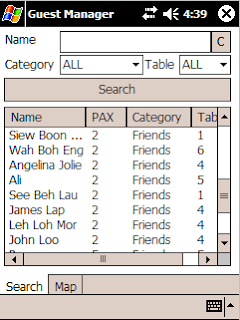Microsoft Message Queue from Classical ASP
After days and days of doing absolutely nothing, I needed something to reaffirm my skills. Here it is - a task assigned to a couple of junior programmers. They weren't able to complete. Their supervisors weren't able to help them. Enter technosock! I took on the challenge and succeeded. Yay! The problem: We have a long running ASP transaction. We want to use MSMQ to store the event and do the processing later. Task: Use ASP to store the event.
Setup
MSMQ needs to be installed on a domain controller. I think so. So create a Windows 2003 server, and a new domain. I make it the Primary Domain Controller. I also install the Microsoft Message Queue components. All of them.
On the client side, I tried writing VB6 code from my PC - it didn't work. My guess is that you have to be a domain member. Fuck that! I'll write ASP and host it directly of the server in question. So I install IIS and enable Classical ASP (its disabled by default).
Code
There are four functions which I tried. First of all, we need to create the queue. Secondly, we write a message to the queue. Thirdly we read from the queue and fourth we delete the queue. Straight forward? Yes.
Create the queue
Set qi = Server.CreateObject("MSMQ.MSMQQueueInfo")
qi.PathName = ".\MyQueue"
qi.Create
qi is a queue info. MyQueue is the name of the queue. .\ means use the local hostname.
Send a message the queue
DIM MQ_SEND_ACCESS, MQ_DENY_NONE
MQ_SEND_ACCESS = 2
MQ_DENY_NONE = 0
Set qi = Server.CreateObject("MSMQ.MSMQQueueInfo")
Set msg= Server.CreateObject("MSMQ.MSMQMessage")
qi.PathName = ".\MyQueue"
Set objQ = qi.Open( MQ_SEND_ACCESS, MQ_DENY_NONE )
msg.Label = "Label"
msg.Body = "Body"
msg.Send objQ, 0
objQ is the queue. Use qi.Open to get it. The parameters MQ_SEND_ACCESS and MQ_DENY_NONE are constants. The values are 2 and 0. Create a message object msg then send it to the queue objQ.
Receive a message from the queue
Dim qi
Dim ReceiveQ
Dim msg
DIM MQ_DENY_NONE
Dim MQ_RECEIVE_ACCESS
MQ_DENY_NONE = 0
MQ_RECEIVE_ACCESS = 1
Set qi = Server.CreateObject("MSMQ.MSMQQueueInfo")
Set msg = Server.CreateObject("MSMQ.MSMQMessage")
qi.PathName = ".\MyQueue"
Set ReceiveQ = qi.Open(MQ_RECEIVE_ACCESS, MQ_DENY_NONE)
Set msg = ReceiveQ.Receive(3, false, true, 1000, false)
If msg is Nothing Then
Response.write "No message was received"
Else
Response.write "Message received<br>"
Response.write msg.Body
End If
ReceiveQ.Close
ReceiveQ is the queue. Its opened with MQ_RECEIVE_ACCESS. Call ReceiveQ.Receive to get the message. The parameters 3, false, true, 1000, false are mostly flags. The value 1000 is the timeout in milliseconds.
Delete the queue
Set qi = Server.CreateObject("MSMQ.MSMQQueueInfo")
qi.PathName = ".\MyQueue"
qi.Delete
Same as the first snippet. Just change Create to Delete
Conclusion
There you have it. MSMQ in under five minutes. Ok so it took a couple hours to set up Windows Server 2003 and IIS and MSMQ. But after you start writing ASP code, its just a few lines of code. There's lots more you can do with message queues like sending binary objects, restricting who has access to the queue and so forth. Message Queues are a good idea. MS has some good tools but documentation is a but lacking in my opinion. I had trouble searching for most of the things - could be because my connection is terrible. Anyway I've done all the hard stuff so you don't have to.

